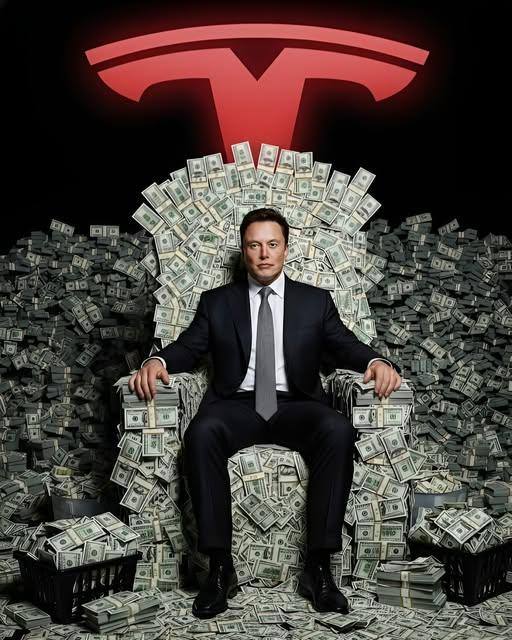TN. Elon Musk: The Visionary Leader Reshaping Transportation, Energy, Space, and Human-Machine Technology
Few figures in modern technology generate as much global attention as Elon Musk. As the driving force behind Tesla, SpaceX, Neuralink, and The Boring Company, Musk has positioned himself at the center of some of the most transformative innovations of the 21st century. From electric vehicles to interplanetary rockets, from brain-computer interfaces to underground transit tunnels, his projects share one defining theme: building the future faster than anyone expects.

Tesla: Reinventing Mobility and Energy
Tesla began as a bold bet on electric vehicles, but under Musk’s leadership, it has grown into one of the most influential companies in the world. As co-founder and CEO, Musk oversees Tesla’s mission to accelerate the global shift toward sustainable energy. The company’s lineup — the Model S, Model X, Model 3, Model Y, the Cybertruck, and the Semi — reflects a combination of engineering ambition and consumer-friendly design.
Tesla disrupted the automotive industry by proving that electric cars could be high-performance machines instead of niche alternatives. The Model S redefined expectations for EV range and luxury. The Model 3 became one of the best-selling electric cars globally. The Cybertruck challenged conventional design altogether, sparking worldwide conversation long before the first deliveries.
But Tesla’s impact goes far beyond cars. The company also develops home energy storage solutions like the Powerwall and Powerpack, as well as solar roof systems designed to integrate clean energy into everyday life. Musk envisions a future where transportation and energy merge into a seamless, sustainable ecosystem — and Tesla continues to push that vision forward.
SpaceX: Building the Road to Mars
If Tesla reshaped roads, SpaceX is rewriting humanity’s relationship with space itself. Musk founded SpaceX in 2002 with one goal: make space travel dramatically more affordable and ultimately enable human life on Mars. The idea sounded impossible at the time, yet SpaceX has since become one of the most successful and innovative aerospace companies in history.
One of SpaceX’s most important breakthroughs was the development of reusable rockets. The Falcon 9 — now a workhorse of global spaceflight — can launch into orbit and return safely to Earth, where it can fly again. This innovation alone has lowered launch costs and changed the economics of space exploration.
SpaceX achieved a milestone in 2020 when it launched astronauts to the International Space Station aboard the Crew Dragon capsule — the first time a private company had ever flown humans into orbit. Since then, the company has routinely conducted crewed missions, supporting NASA partnerships and commercial flights.
Yet the most ambitious project is Starship, a fully reusable spacecraft designed for deep-space travel. With Starship, Musk aims to establish cargo missions to the Moon, build long-distance space infrastructure, and eventually create a sustained human presence on Mars. What once sounded like science fiction is slowly becoming a structured engineering roadmap.
Neuralink: Merging Humans and Machines
Beyond cars and rockets, Elon Musk is also pushing the boundaries of neuroscience through Neuralink, where he serves as CEO. Neuralink is developing brain-machine interface technology — tiny, implantable devices designed to help people interact with computers using only neural signals.
The initial goal is medical: helping individuals with paralysis, neurological disorders, or communication impairments regain functionality. Over time, the company envisions broader applications, such as improved human-computer interaction and new forms of digital accessibility.
While the technology is still in the early stages, Neuralink represents a bold step toward a future where the human brain and digital systems can work together more seamlessly than ever before.
The Boring Company: Rethinking Urban Transit
Musk founded The Boring Company to address a problem most city residents experience daily: traffic congestion. The company’s solution is simple but ambitious — create networks of underground tunnels designed to move vehicles at high speeds, reducing surface-level gridlock.
Its first major project, the Vegas Loop, is designed to shuttle passengers through a system of underground tunnels beneath Las Vegas. By focusing on efficiency, safety, and cost-effective tunneling, The Boring Company aims to eventually expand its model to other major cities around the world.
Whether the future of urban mobility lies underground remains to be seen, but Musk’s approach reflects his broader philosophy: if a system isn’t working, reinvent it from the ground up — or in this case, from below it.
A Vision That Spans Industries — and Planets
What sets Elon Musk apart isn’t just his leadership of multiple companies; it’s the way those companies intersect. Tesla focuses on sustainable energy, SpaceX on multiplanetary travel, Neuralink on human-machine interfaces, and The Boring Company on urban mobility. Together, they form an ecosystem centered on long-term thinking and bold experimentation.
Musk’s projects often invite both admiration and skepticism, but there is no denying the scale of his influence. His work touches automotive engineering, aerospace, neuroscience, artificial intelligence, and infrastructure — fields that typically evolve slowly, yet are accelerating rapidly under the pressure of his ambitions.
As Musk continues to push forward, one thing is clear: his vision is reshaping industries that define how humanity moves, communicates, explores, and imagines the future.

